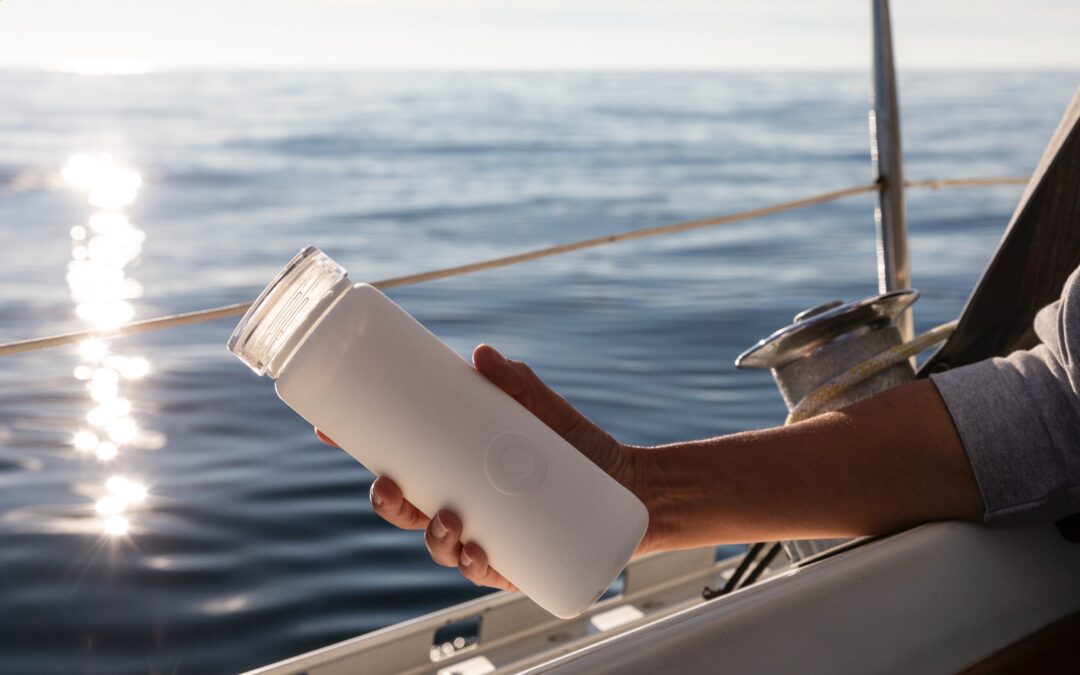Learn how you can recycle old reusable plastic and metal water bottles without stress
It’s 2023. Sustainability and reducing our carbon footprint are at the forefront of our minds in our daily lives; just look how often “Just Stop Oil” and “Extinction Rebellion” have been featured in news headlines. As a result, sustainable and reusable versions of items have become huge. For example, for the past few years, the popularity of reusable water bottles has skyrocketed.
The statistics on single use product waste is overwhelming. In the UK we use 7.7bn single use plastic water bottles every year. Of those, over 3.25bn do NOT get recycled. That is enough unrecycled single use water bottles to wrap around the Earth 19.5 times!
Research suggests that buying a reusable water bottle rather than a single use plastic bottle could stop over 1,000 plastic bottles littering the ocean (over the course of 3 years). Plus, reusable water bottles can be more stylish and last much longer. We take them everywhere – to work, school, university, the gym, hiking, the list is endless.
However, this comes at a cost. Due to their portable nature, they are very easily lost!
Did you know that reusable water bottles are the number one most commonly lost items in the UK?
Research conducted using NotLost data reveals that reusable water bottles are amongst the leading category of lost items on university campuses. Each year 10,000’s of water bottles are found on university campuses and are not returned to their owners. That means a lot of water bottles are sitting, unclaimed, at lost property offices.
Therefore, eventually they need to be disposed of. But how do we do that sustainably? It feels completely wrong to send what is a supposedly eco-friendly product to landfill… So, what do you do with old water bottles when their lives are over?
Don’t fear, all is NotLost! NotLost are here to explain how to get rid of a reusable water bottle, the easy way.
How do you recycle a reusable water bottle?
Let’s explore how to recycle a reusable water bottle. Firstly, you need to find out what it is made of. What are reusable water bottles made of? The most popular materials used to make reusable water bottles are:
1. Metal
2. Plastic (but not the single-use kind)
3. Glass
4. Hybrid Material Bottles
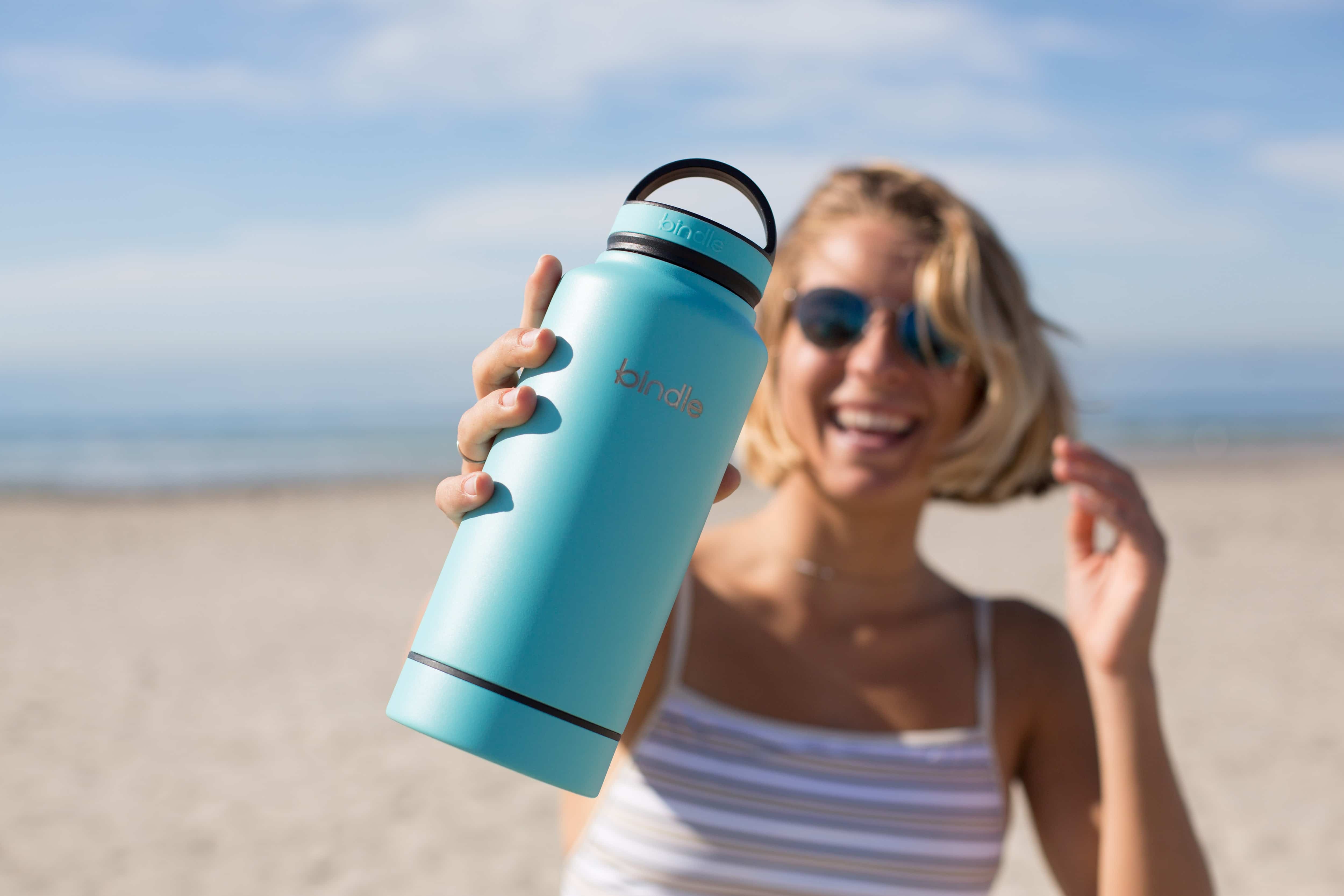
Metal water bottles
If you’re not sure if your metal water bottle is stainless steel or aluminium, grab a magnet off your fridge. If your metal water bottle attracts the magnet, it’s probably stainless steel. If it’s not magnetic, it’s probably aluminium. Reusable metal water bottles are most commonly made of stainless steel. Some brands that make stainless steel water bottles are: Waterdrop, S’well, Yeti, Contiga, Hydro Flask and, of course, Chilly’s!
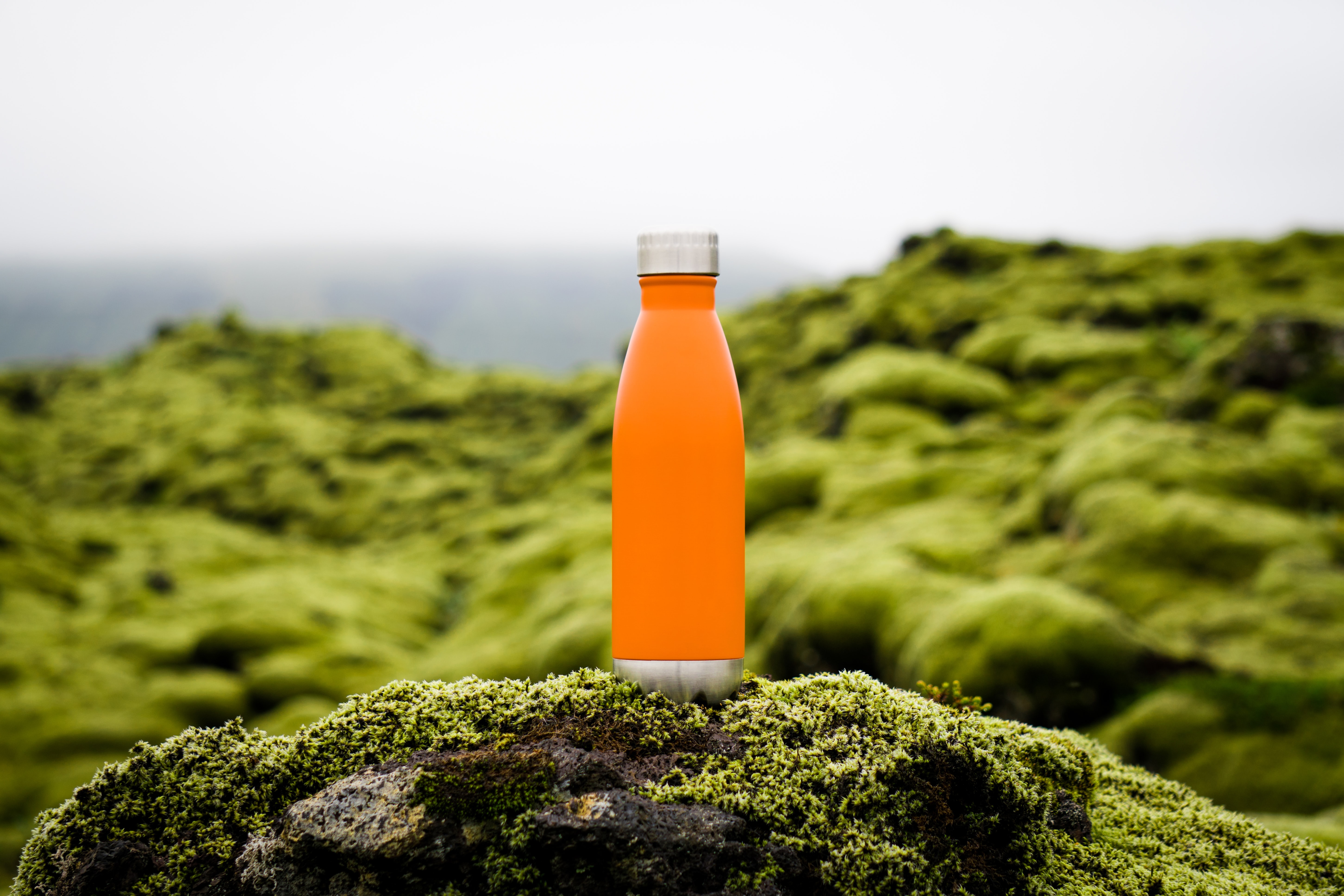
How to recycle a metal water bottle
Stainless steel water bottles are recyclable! However, not curb side. This means you should not put your bottle into the recycling bin at home.
So, where can you recycle a stainless steel water bottle? Your local Reuse and Recycling centre is the place to go! Skip to here to find out where your closest centre is.
Plastic water bottles
If you’re not sure what material your reusable water bottle is made of, give it a google or check the company website! Or, investigate yourself…If it is a type of plastic it will have a number in a recycling triangle on the base or side. These are not made from single-use plastic. Instead, they are made from significantly more durable types of plastic. These reusable plastic water bottles are commonly used as promotional items for companies, popular with those doing sports. As a nation, we collect a lot of these… So when their life is over, what do you do with an old plastic bottle?
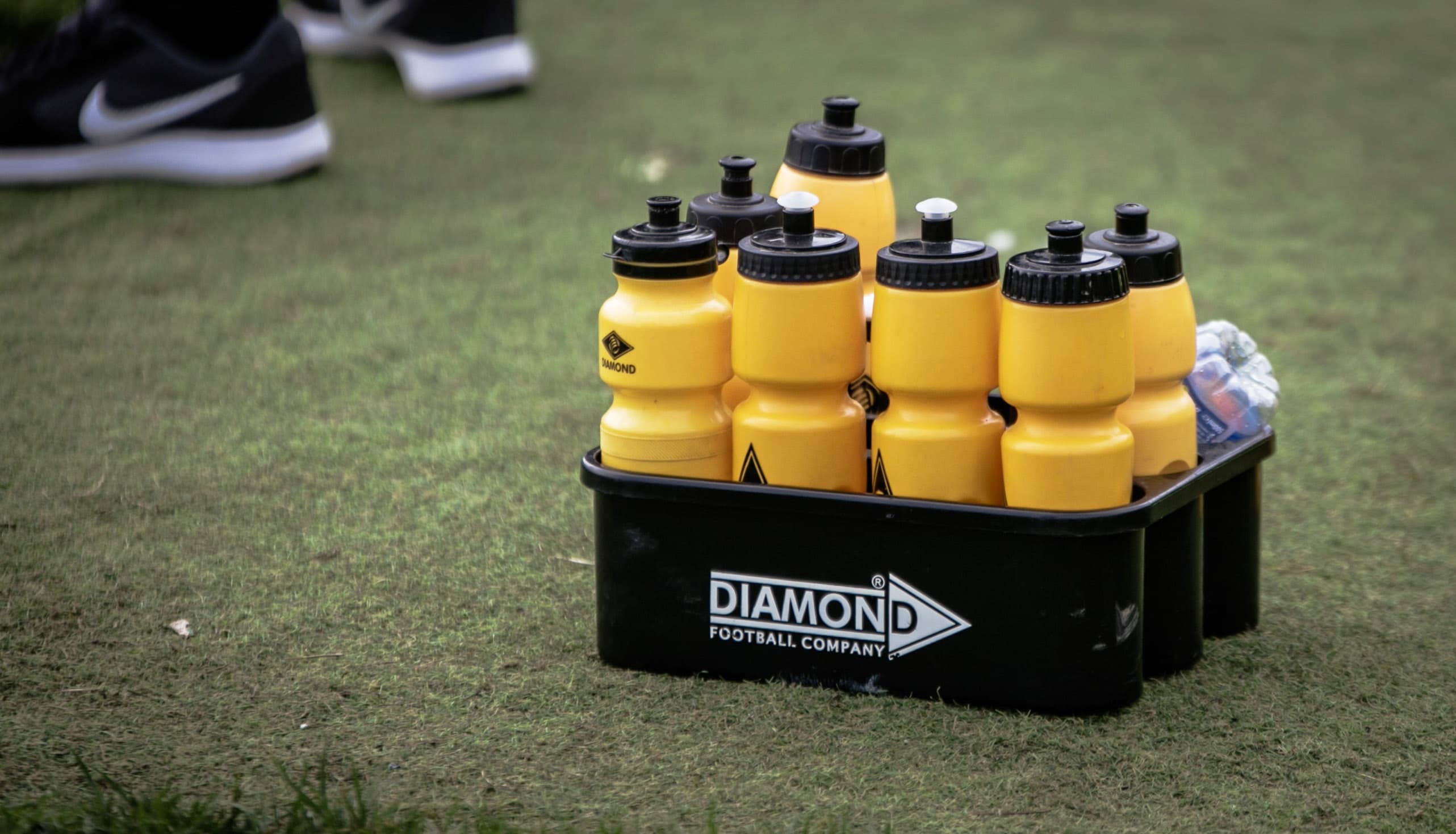
How to recycle a reusable plastic water bottle
Firstly, we need to understand what these bottles are made of. Reusable plastic bottles can be made from a variety of different materials, such as:
1) High-density polyethylene (HDPE)
2) Low-density polyethylene (LDPE)
3) Polyethylene terephthalate (PET)
4) Polypropylene (PP)
Polyethylene Terephthalate and Polypropylene are more rigid and hard plastics. HDPE has some flexibility whereas LDPE is the most flexible and squeezable. The latter is the most likely contender for your reusable plastic bottle.
Glass Water Bottles
Glass water bottles are indeed recyclable but must be disposed of at a bottle bank or your local recycling centre. To do so follow these simple steps:
- Empty and give a quick rinse – leftover liquid can contaminate other recyclables which may mean they aren’t recycled.
- Put lids and caps back on – this reduces the chance of them getting lost during the sorting process as they can be recycled separately.
- Corks should be removed from bottles before they are recycled but can be home composted.
- At bottle banks, blue glass goes in with green glass.
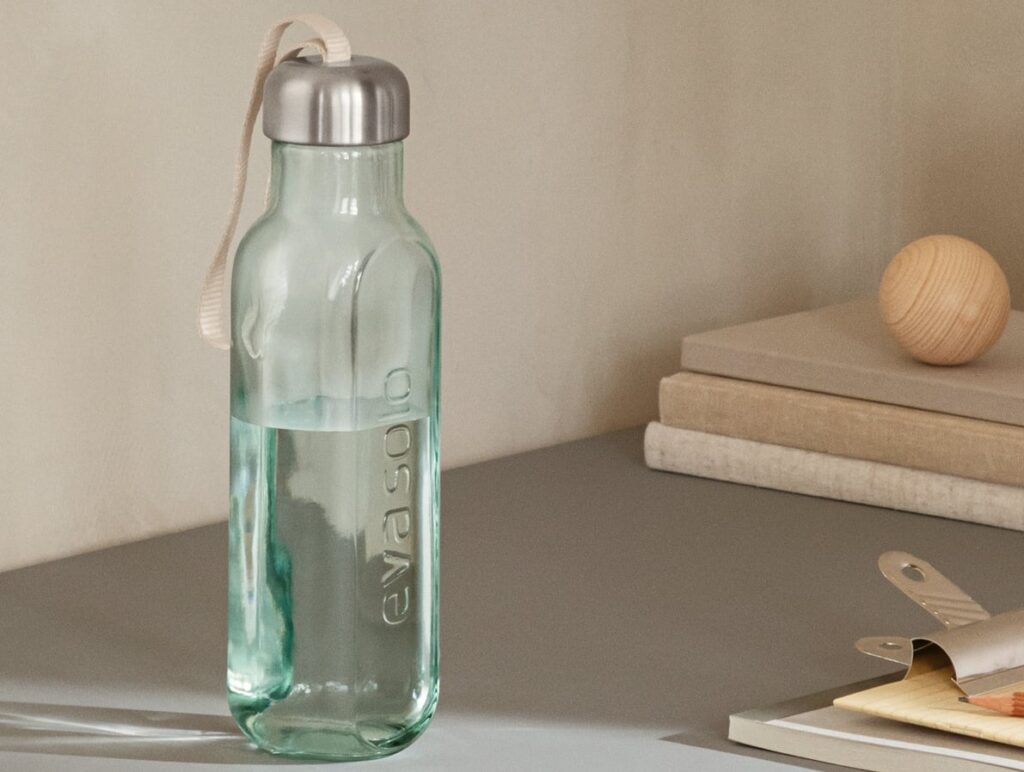
Hybrid Material Bottles
Alongside the common materials used to create water bottles, some are in fact made from a hybrid of the above materials, subsequently making its recyclability a lot more challenging. Some of these challenges include:
- They may not be accepted by regular recycling plants and need to be taken to specialised scrap metal recyclers. (1)
- They may be difficult to separate the different materials fused together, such as plastic and metal, and end up in landfills. (1)
- They may have low recycling rates due to lack of access, consumer behaviour, or insufficient recycling capacity. (2)
- They may not meet the quality standards or input requirements for recyclers who use advanced technologies. (2)
Sources:
1) http://sustainability.mit.edu/
As a result of the difficulties surrounding hybrid materials, companies have been developing ways to allow easier access to recycling solutions for these trickier materials. One of the newest innovations is the UK’s first recycling programme for reusable plastic food containers and water bottles; developed by Sistema and Terracycle. More information can be found here.
How do I know what type of plastic my reusable water bottle is made of?
Look at the base or the side of the bottle. It will have some letters or a numbers in a recycling triangle in it. This number indicates it is a certain type of plastic. For example, PET is number 1, HDPE is number 2 and LDPE is number 4. The full breakdown of the numbers and what they mean is below. Source: Earth Easy.
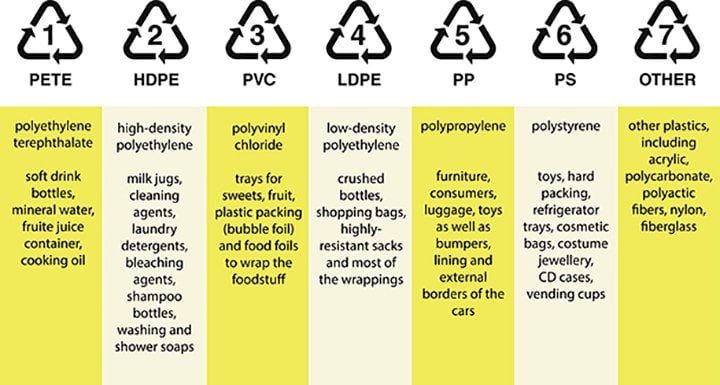
It’s all well and good knowing what your bottle is made of. What we need to know is where it can be recycled.
This simple process should help you determine how to recycle the item:
1) Go to the gov.uk website and fill in your postcode
2) This should give you a link to your local authority/council/borough website. Go to website.
3) Search the webpage for a section/page dedicated to how different items are recycled
There may be a ‘Recycling A-Z’ – give this a quick scan. Although this list helpfully covers common items, on the other hand, it misses out items such as reusable water bottles.
4) Locate your nearest ‘Reuse and Recycling Centre’ – otherwise known as ‘the dump’ or ‘the tip’
This will be managed by your local council and should have a clear list of items it will take and which it will not. However, it is likely to take your reusable water bottle! Give them a call if you aren’t sure.
5) Take your reusable water bottle down to your local Reuse and Recycling Centre. Dispose of it at the relevant area!
Conclusion
This blog should have given you further understanding about what different reusable water bottles are made of and how you can responsibly dispose of them yourself! It may not be the quickest task, however, it is a very important one. Ensure you run a sustainable business by disposing of your lost property appropriately. If you want to find out more about NotLost, head to our Solutions page. Or, stay up-to-date by following us on LinkedIn and Twitter.
